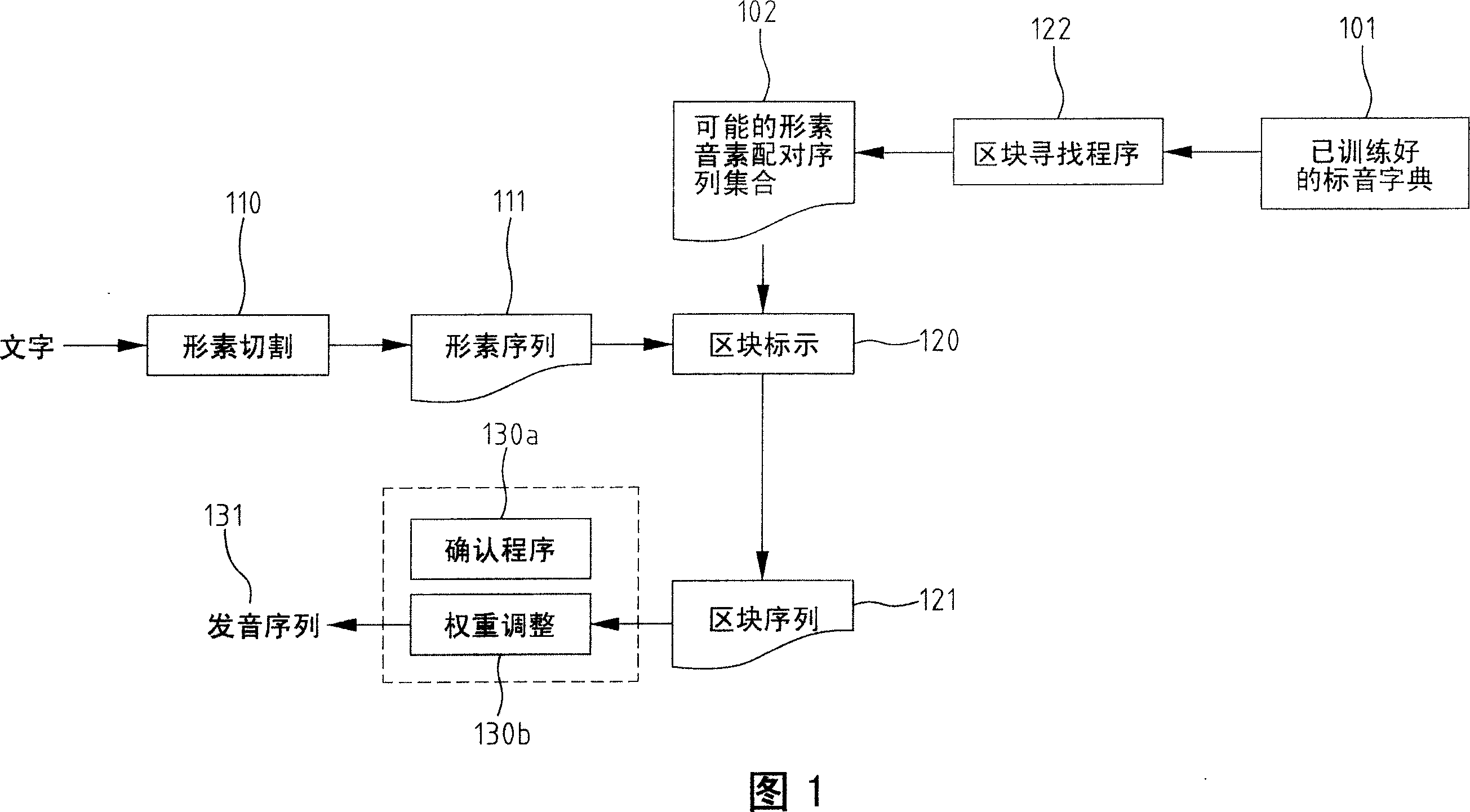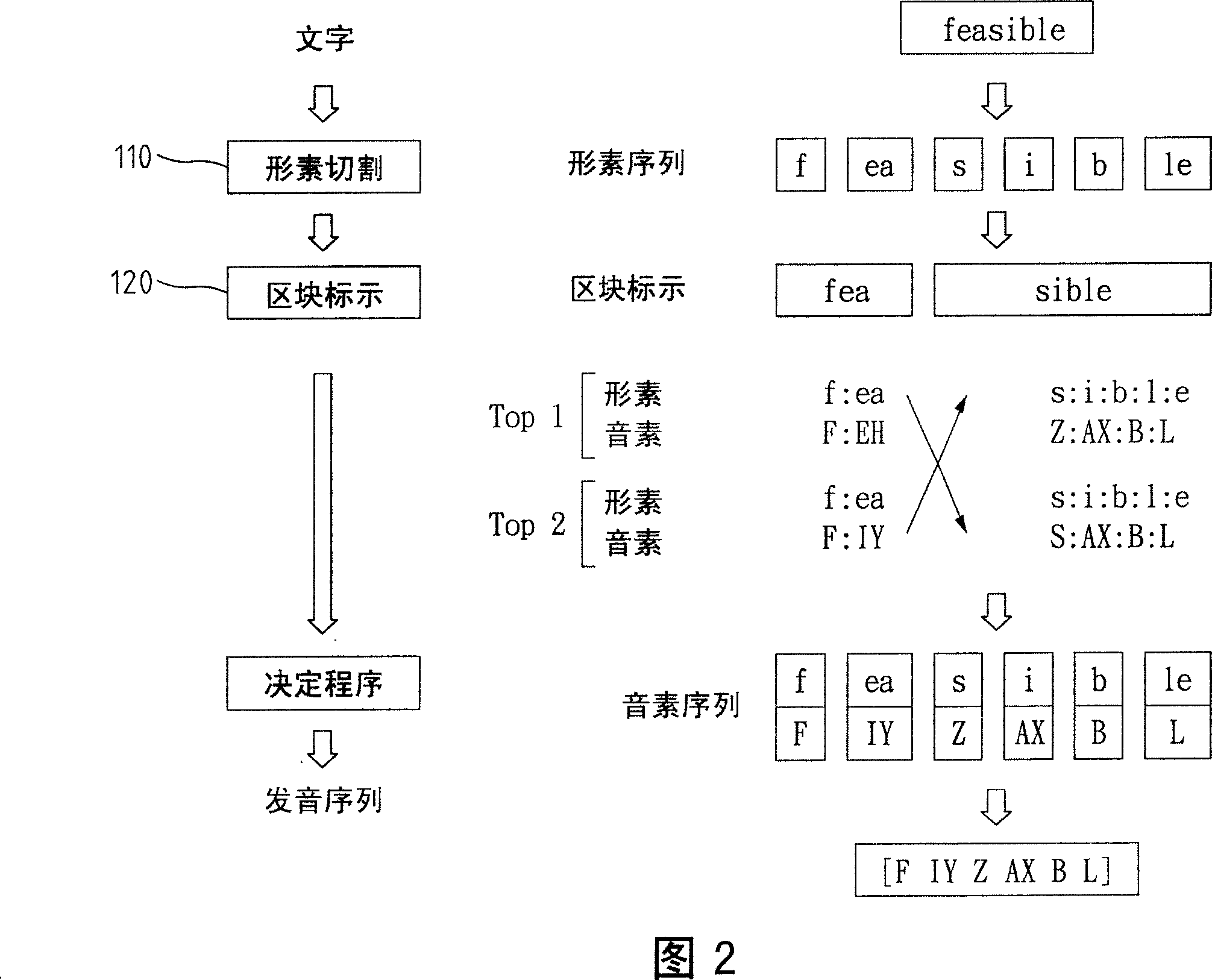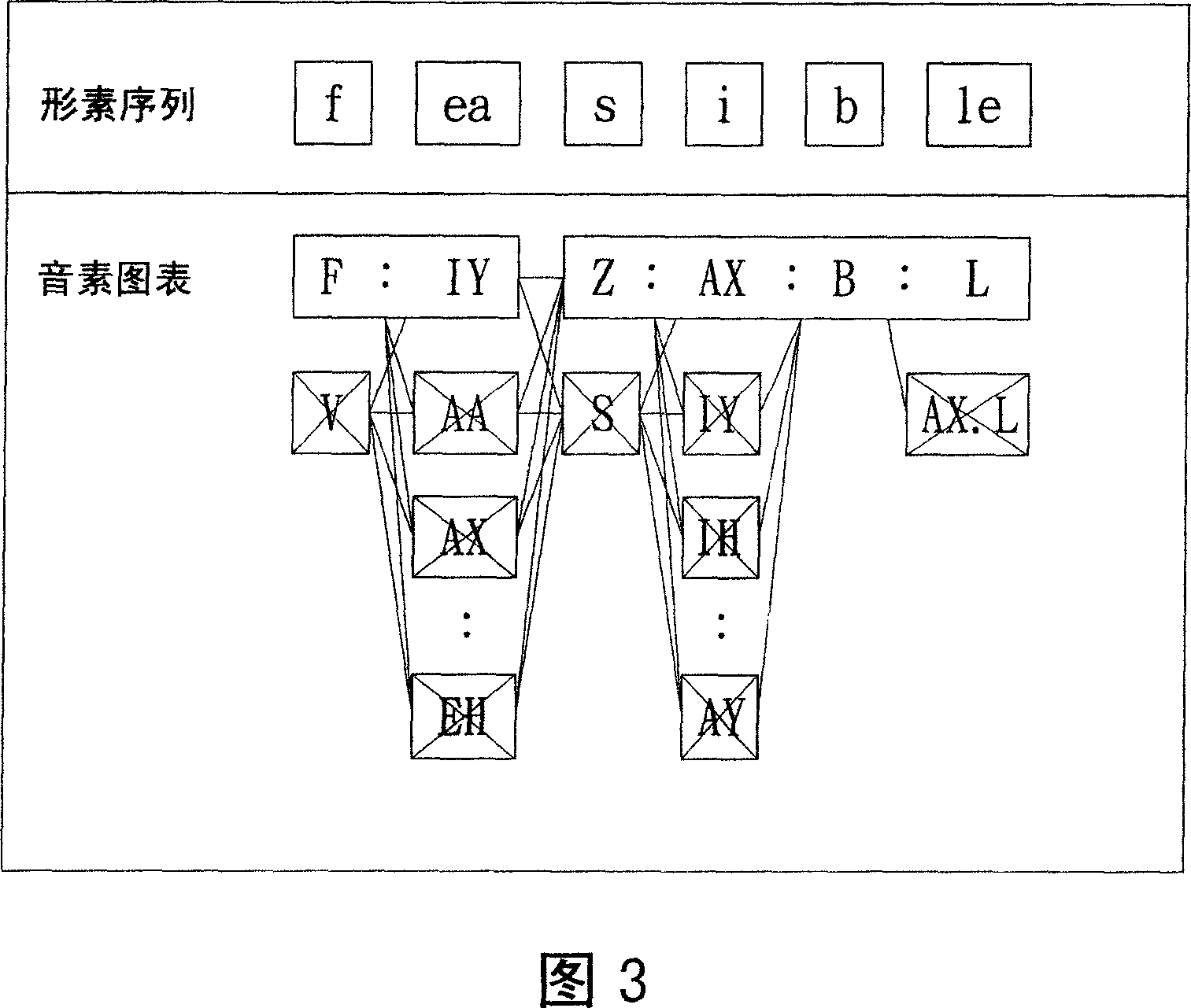Method for converting character into phonetic symbol
A technology of text and phonetic symbols, applied in the field of speech synthesis and speech recognition, can solve problems such as poor accuracy, inability to effectively improve overall efficiency, and large charts
- Summary
- Abstract
- Description
- Claims
- Application Information
AI Technical Summary
Problems solved by technology
Method used
Image
Examples
Embodiment Construction
[0045] Fig. 1 is a flow chart illustrating the method for converting text into phonetic symbols of the present invention. The method for converting text into phonetic symbols includes a process of searching for a morpheme-phoneme segment and a three-stage word-transformation process. Through a trained phonetic dictionary, a set of possible pairing sequences of morphemes and phonemes (called blocks) is found, and the input text is sequentially subjected to a morpheme cutting, a block marking, and a confirmation procedure. The three-stage word transliteration process determines a pronunciation sequence.
[0046] Referring to FIG. 1 , in the process of searching for shapeme-phoneme fragments, firstly, a trained phonetic dictionary 101 is used, and a search program 122 is used to search for a set of possible shapeme-phoneme pairing sequences, as shown by reference number 102 . In the three-stage character transliteration process, the first stage is to perform a morpheme segmentat...
PUM
 Login to View More
Login to View More Abstract
Description
Claims
Application Information
 Login to View More
Login to View More - R&D
- Intellectual Property
- Life Sciences
- Materials
- Tech Scout
- Unparalleled Data Quality
- Higher Quality Content
- 60% Fewer Hallucinations
Browse by: Latest US Patents, China's latest patents, Technical Efficacy Thesaurus, Application Domain, Technology Topic, Popular Technical Reports.
© 2025 PatSnap. All rights reserved.Legal|Privacy policy|Modern Slavery Act Transparency Statement|Sitemap|About US| Contact US: help@patsnap.com



